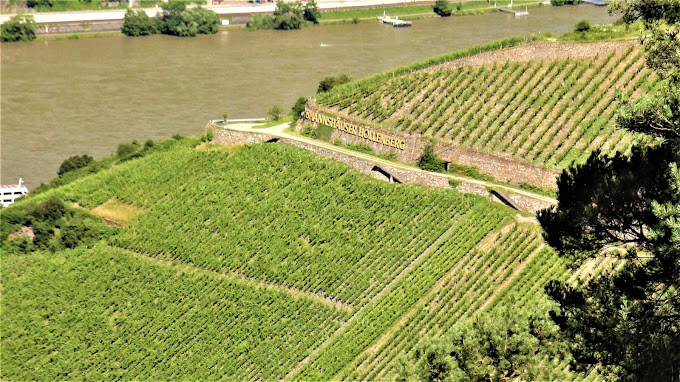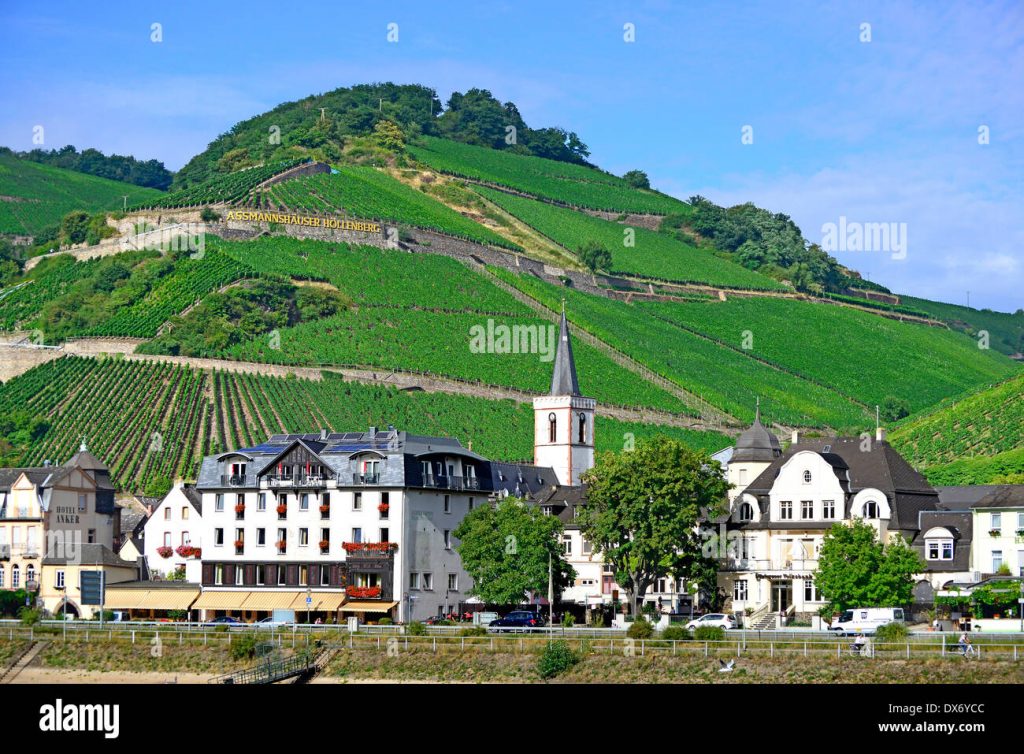Located in the centre of the Rheingau wine region of Germany, the Assmannshäuser Höllenberg vineyard is a name that is known for its elegance, heritage, and outstanding quality. This vineyard, which has a centuries-long history and is renowned for producing some of the best wines in the area, is highly prized by collectors and aficionados worldwide. However, what is so unique about Assmannshäuser Höllenberg? This essay will examine the vineyard’s distinctive terroir, the winemaking methods used to produce its stunning wines, and the commitment required to uphold a centuries-old tradition.
A Distinct Terroir in the Heart of the Rheingau
A wine lover’s dream, the Rheingau region is known for its gorgeous scenery along the banks of the Rhine River. However, Assmannshäuser Höllenberg’s remarkable terroir is what really distinguishes it from other local vineyards. The high slopes of the Taunus Mountains where the vineyard is located create the perfect microclimate for producing world-class Spätburgunder (Pinot Noir) and Riesling. Here, the soil composition is especially unusual, combining various soil types that affect the wines’ flavor profile and add to their individuality.

Assmannshäuser Höllenberg’s Soil Types
One of the main elements that contributes to the remarkable quality of Assmannshäuser Höllenberg wines is the soil makeup of the vineyard. The development of the vines depends on a number of different types of soil:
Schiefer (Slate):
At Assmannshäuser Höllenberg, slate is the predominant soil type. Because these slate-rich soils hold heat well, the vines ripen evenly and gradually, especially in the cooler microclimate of the high slopes of the vineyard. This results in wines with a noticeable minerality, particularly in Riesling, which frequently has a smoky or flinty character that accentuates its complexity and crisp acidity.
Löss
Löss, a rich, nutrient-rich soil that encourages robust grape growth and high water retention, is also found in places throughout the vineyard. Loess balances the slate’s minerality by giving the wines a softer, more fruity taste. Spätburgunder, which gains from this additional depth and richness in the flavor profile, benefits most from it.
Marl and Clay:
The complexity of the wines is further enhanced by the presence of clay and marl soils in specific vineyard locations. These soils produce wines with smoother tannins and fuller bodies because they retain moisture well and supply more nutrients. This is especially evident in Spätburgunder, which gains from the improved fruit expression and softer texture these soils offer.

Vineyard Slope and Exposition
Another significant factor that adds to the vineyard’s distinctive terroir is the exposition, or orientation of the vineyard slopes. The steep, south-facing slopes on which the vineyard is located optimize sun exposure and guarantee that the plants receive enough warmth during the growing season.
Slopes that face south
The success of the vineyard is largely dependent on its south-facing aspect. It permits the best possible exposure to the sun, particularly in the Rheingau’s cooler areas. This promotes a balance of acidity and fruitiness in the grapes by maximizing photosynthesis and ensuring that the vines ripen gradually. For Riesling, this entails the emergence of fruity flavors and a distinctive minerality that is indicative of the region. In a similar vein, Spätburgunder benefits from this exposure since it keeps the grapes fresh while allowing them to develop rich, complex fruit flavors.
Steep Slopes (up to 60% gradient)
With gradients as high as 60%, the Assmannshäuser Höllenberg vineyard has some of the Rheingau’s most strikingly steep slopes. The vineyard is labor-intensive due to its difficult topography, necessitating manual picking in order to carefully choose only the best grapes. Additionally, these steep slopes offer superior drainage, preventing the vines from being overflowed with water during periods of intense precipitation. This makes it possible for the roots to penetrate deeply into the stony soils, which aids in the growth of tiny, flavourful berries.
Together with the south-facing, steep slopes, these soil types—slate, löss, clay, and marl—create a special environment that encourages the growth of grapes with remarkable depth and complexity. The slate’s minerality and the loess and clay soils’ richness combine to create wines that capture the unique character of the vineyard.
Noteable Wineries for the Assmannshäuser Höllenberg
Familie Allendorf, Weingut Friedrich Fendel, Weingut August Kesseler, Krone Assmannshausen, Weingut Künstler, Weingut Balthasar Ress, Kloster Eberbach.